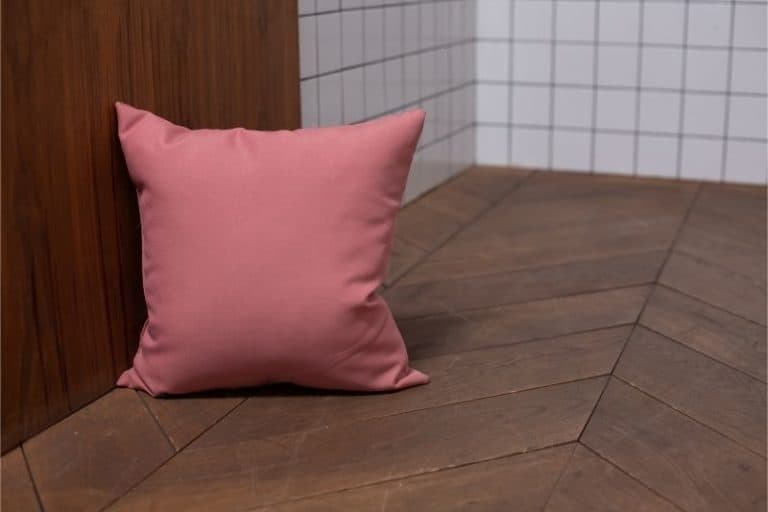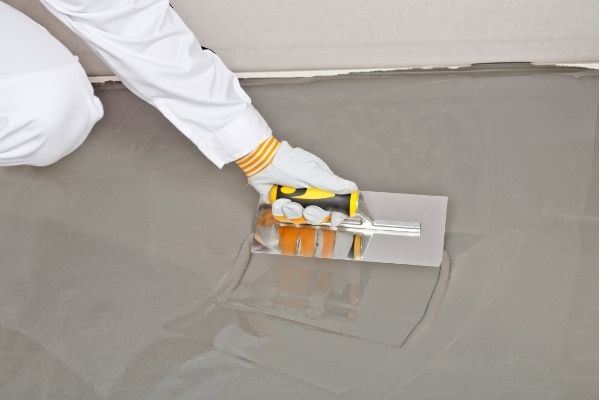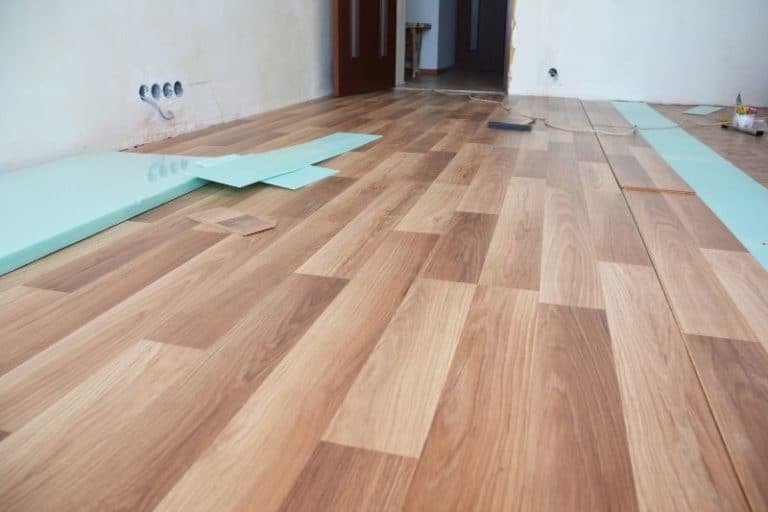Are you sanding polyurethane floors between coats? If not, this blog post is for you.
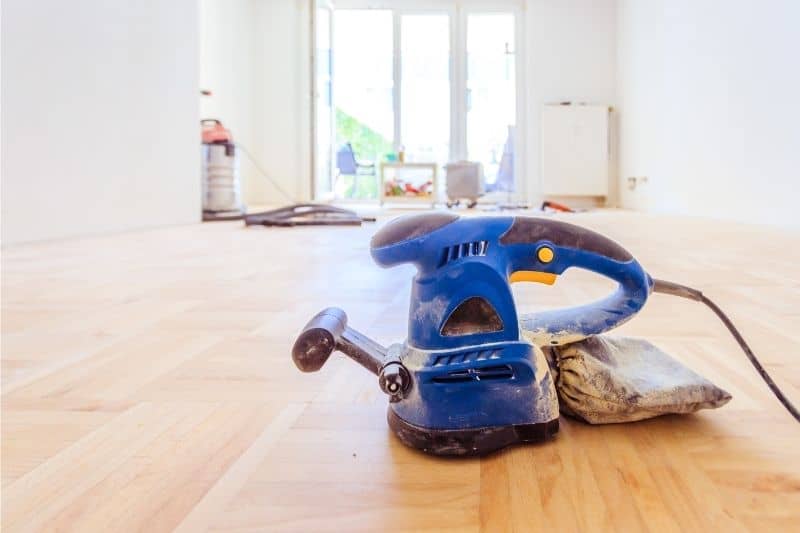
This blog post will teach you how to properly sand your polyurethane floor before the next coat of polyurethane is applied. We cover everything from what tools to use to how much sandpaper should be used on different types of floors. You’ll also learn about a few common mistakes that people make when they’re sanding their floor and how to avoid them!
This page contains affiliate links, and as an Amazon Associate we earn from qualifying purchases which means we receive a small commission when you make a purchase, at zero cost to you.
Should I Sand Floors Between Coats of Polyurethane?
You might be wondering whether or not you should sand your floor before the next coat of polyurethane. The answer is: it depends on the type of floor and the polyurethane brand.
Newer hardwood floors might only be a quarter of an inch thick and have a laminate coating that cannot be sanded and refinished.
Some poly brands like Minwax Super Fast-Drying Polyurethane do not require sanding between coats, while others like Minwax Water-Based Oil-Modified Polyurethane do.
Regardless of the type, before sanding between coats of polyurethane floors you should always test a small section to make sure that there are no major issues with your sandpaper or sander. If everything checks out you can continue and then apply another coat according to the instructions on the product packaging.
Sanding polyurethane floors between coats will help to create a smooth finish. In case you didn’t know, the smoothness of your surface affects the smoothness of your finish.
The process also creates a better bond for the next coat of polyurethane and ensures a long-lasting finish.
Now that you get the benefits of sanding polyurethane floors between coats, it’s time to learn some sanding tips.
Tips for Sanding Polyurethane Floors Between Coats
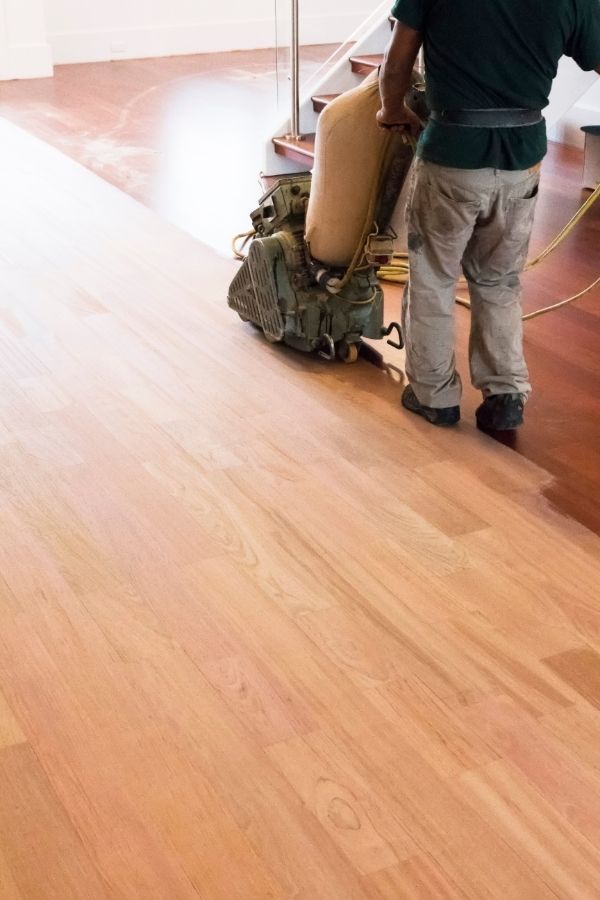
- Give the first polyurethane coat a full day to dry and cure before sanding. For subsequent coats, wait 24-48 hours after application before sanding.
- Use a random orbital floor sander, which can be rented from your local hardware store. This is the most efficient and even way to sand a large area of polyurethane floors.
- Make sure your sandpaper is fresh before starting – if it’s old, replace it with new paper.
- After applying your first coat of polyurethane, make sure to give it a good buffing with 180 or 220 grit sandpaper so you can get rid of any brush marks, bubbles, raised grain and particles.
- Be sure not to apply too much pressure when you’re sanding – it’s better to do multiple passes than one heavy one.
- Always start at one end of the room, then work towards the other side.
- Always sand in small sections and in one direction only.
- Once you’ve sanded your polyurethane floors, clean up the dust with a shop vacuum. Then, wipe them clean with a cloth soaked in mineral spirits. This will remove any dust particles that are still on the surface of the floor and allow for better adhesion of your next coat of polyurethane.
- Always wear a face mask while sanding because it’s very dusty and breathing in poly dust isn’t good for anyone!
What Happens if You Don’t Sand Between Coats of Polyurethane?
When you don’t sand between coats, the polyurethane will dry without sufficient adhesion. It won’t look as good because the polyurethane will pull up in areas where it hasn’t bonded with the previous coat.
Sanding is important for two reasons:
First, sanding fills in any small scratches that might be on your floor. Secondly, it creates an even application so your floors don’t have any shiny patches or rough areas that stand out from the rest of the floor’s surface.
However, some fast-drying polyurethanes do not require sanding because they have an acrylic coating that does not need to be abraded before applying another coat. These finishes will typically feel rough to the touch.
Frequently Asked Questions
What grit sandpaper do I use between coats of polyurethane?
When you sand polyurethane floors between coats, it is important to use a grit that’s not too coarse. A 180- to 220-grit should be good for most situations.
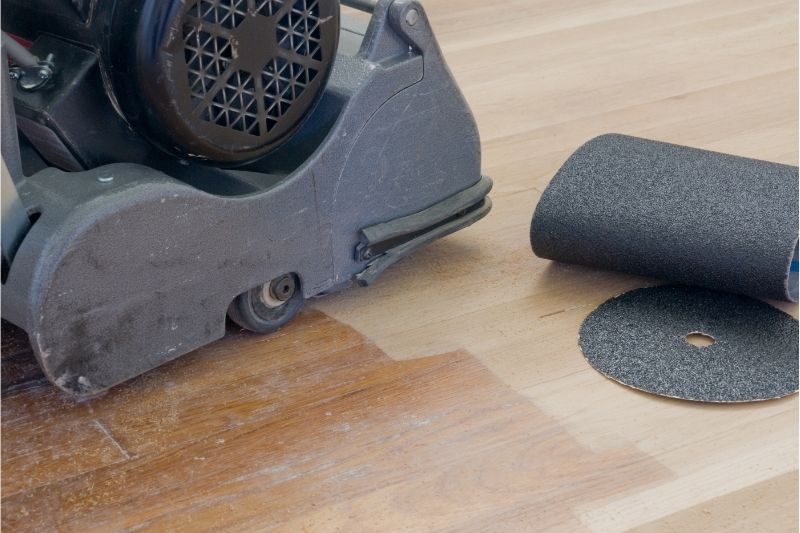
The sandpaper grit is very important because the number of scratches that you leave on your floor will depend on the level of abrasiveness. You need to make sure that it isn’t too coarse, or else you risk scratching and damaging your flooring permanently.
Does polyurethane hide sanding marks?
Sanding marks cannot be completely concealed with polyurethane; after all, it is primarily designed as a sealant. On the contrary, applying polyurethane on sanding marks sometimes makes them more prominent instead!
But there are two ways you can reduce or remove them: wet sanding and going over sanding marks with higher grit sandpaper.
Wet sanding is not as aggressive and can help you remove the more minor scratches that are left by the dry process of sanding, while going over them with a finer grade allows for removing their impressions.
Also, remember to keep your sandpaper moist before applying it to bare wood floors! Dry sanding will only worsen already existing defects in your floor’s finish which you have put so much work into creating and protecting until now.
To avoid sanding marks altogether, avoid using too much pressure during the process.
Do you sand the final coat of polyurethane?
This is the third question that a lot of people ask.
The answer? No! The final coat of polyurethane should not be sanded. Allow it to harden and then apply paste wax or other protective furniture wax product for the ultimate finish.
How do you know when it’s time to sand between coats of polyurethane on floors?
You should only sand between coats when all parts are completely dry (read about the different polyurethane wood floors drying times). Otherwise, sanding will remove the polyurethane and you’ll have to start over again with a new coat of polyurethane.
You will know it’s time to start sanding when at least four hours have passed since you applied the previous coat of polyurethane and the floor no longer feels tacky or sticky.
Can I use an orbital sander between coats of polyurethane?
Yes! The orbital sander is a great tool to use between coats of polyurethane. But there are some things to keep in mind before you do so:
If you’re not sure how much pressure to apply with an orbital sander, start with light pressure and work your way up.
Remember that the orbital sander should only be used on flat surfaces – never on edges or corners.
Be careful when using an orbital sander near doorways and windows because they are more likely to get scratched by the abrasive pad than other parts of the room.
Make sure to wear safety goggles when using an orbital sander, as well as gloves and ear protection if needed.
Can you use steel wool to sand between coats of polyurethane?
Wherever possible, avoid using steel wool because it is too abrasive for delicate surfaces such as polyurethane; instead, opt for a 180-220 grit sandpaper which should be enough.
If you do use steel wool to sand between coats of polyurethane, make sure that it’s only on the roughest scratches and not every nook or cranny in order to avoid damaging your flooring.
What is the best way to sand a floor?
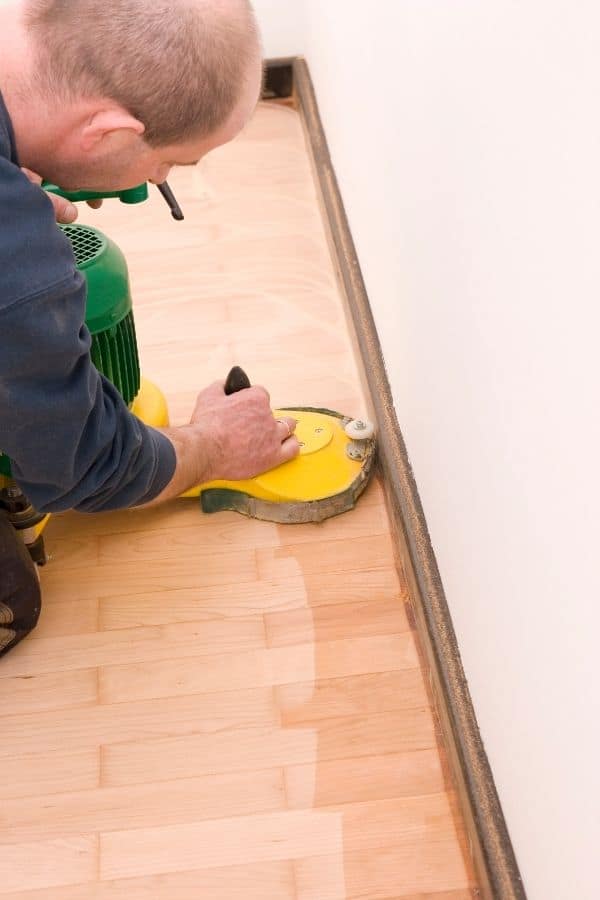
There are different types of sander for floors. They are:
- drum sander
- orbital sander
- vibrating sander
- edge sander
The best way to sand a floor is by using a random orbital sander. This will allow you to sand the floor better than if you were using a drum sander. The drum sander will sand the floor more roughly and can damage areas of your hardwood floors.
The random orbital sander moves the sanding disk in small ellipses by combining it with a spinning motion; therefore, it doesn’t leave swirl marks on the floor.
Conclusion
Sanding your floor after applying each new layer of polyurethane provides maximum protection against wear-and-tear that might otherwise make the finish less durable over time. If you sand correctly, the surface will be smooth and level. Your floors may also have a better shine with each coat of polyurethane if they’re given time to dry thoroughly between coats.
As long as you’re diligent about between coat sanding, these tips should help ensure a beautiful floor every time!



